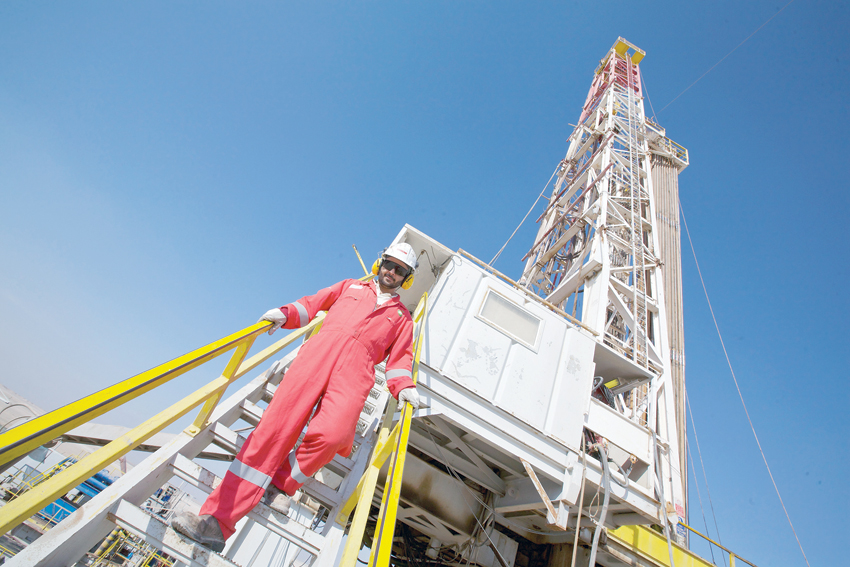

Higher levels of output have fed into GDP, with data from the NCSI showing that the natural gas sector increased its contribution to nominal GDP by 2.7 per cent last year to RO 1.19 billion ($3.1bn). By comparison, crude oil’s input shrank by 27.5 per cent to RO 5.79 billion ($15bn)
MUSCAT: Oman is seeking to enhance its upstream gas segment to supply growing demand, with major upcoming projects expected to help achieve this goal.
Speaking at an executive committee meeting of the International Gas Committee at the end of March, Salim bin Nasser al Aufi, Under-Secretary of the Ministry of Oil and Gas (MOG), said Oman was “changing the focus” and becoming “more of a gas-driven nation”.
According to Al Aufi, Oman produced more than 100m standard cu metres per day (scmd) of gas last year, a 3.5 per cent increase on the 2015 figure.
Higher levels of output have fed into GDP, with data from the National Centre for Statistics and Information showing that the natural gas sector increased its contribution to nominal GDP by 2.7 per cent last year to RO 1.19bn ($3.1bn).
By comparison, crude oil’s input shrank by 27.5 per cent to RO 5.79bn ($15bn).
Gas production in the Sultanate is needed to meet the power demands of the country’s growing industrial base, with sector consumption expected to rise from 6.7 billion cubic metres in 2015 to 10 billion cubic metres by 2020, according to the Oman
Power and Water Procurement Company.
With overall demand forecast to grow at an annual rate of 7.3 per cent between 2016 and 2025, according to Business Monitor International, the challenge for Oman will be to continue to develop new reserves.
One such source is the $16bn Khazzan gas field project, which is being developed by BP in partnership with Oman Oil Company (OOC). Following an amendment to the original exploration and production sharing agreement last November, the area licensed for development now covers some 3,700 sq km, making it one of the region’s largest unconventional tight gas accumulations.
By November BP had completed more than 80 per cent of the project’s first phase and is expected to deliver gas before the end of this year. With the addition of the second phase, scheduled for completion in 2020, BP expects the project to produce 42m scmd.
As well as laying out its long-term commitment to boosting gas production, Oman has been reducing oil output in line with a cap on production introduced by the MOG at the beginning of the year.
Oman was one of 11 non-Opec members to attempt to curb the supply glut in the global oil market by agreeing on a total cut of 1.8m barrels per day (bpd).
For Oman, this meant agreeing to reduce its output by 45,000 bpd, with average production in 2016 standing at roughly 1.1m bpd.
The result was a 3 per cent month-on-month drop in crude oil production in January to 29.93m barrels, or 965,617 bpd.
The enforcement of the production cap by both Opec and non-Opec members is expected to help bring the price of Brent crude to an average of $54 per barrel this year, as per US Energy Administration estimates, up from $44 last year.
With Oman’s 2017 state budget having been formulated under the assumption that the average price of crude would reach just $45 per barrel this year, according to the central bank’s “Mid-year Review of the Oman Economy 2016”, any improved oil-price environment could mean a smaller fiscal deficit. In turn, a smaller government debt burden would reduce the risk of a downgrade of Oman’s sovereign credit rating.
The projected oil revenue for 2017 is RO 4.45bn ($11.6bn), which is expected to account for around 51 per cent of the Sultanate’s total income, according to the central bank.
As the upstream sector undertakes its production cut, downstream prospects were given a boost in early April with the announcement that the OOC and Kuwait Petroleum International had signed a contract to build a $7bn refinery in the port town of Duqm.
The 50-50 joint venture will have a capacity of 230,000 bpd when completed in 2019, Hilal al Kharusi, chief of OOC, said at the signing ceremony in Muscat. Both partners will finance up to 35 per cent of the investment capital for the project, while the remaining amount will be funded by domestic and international banks.
As the Sultanate continues to rely on hydrocarbons for much of its wealth and power generation, the case for a strategy to encourage renewable energy investment is becoming increasingly relevant.
Oman Observer is now on the WhatsApp channel. Click here



